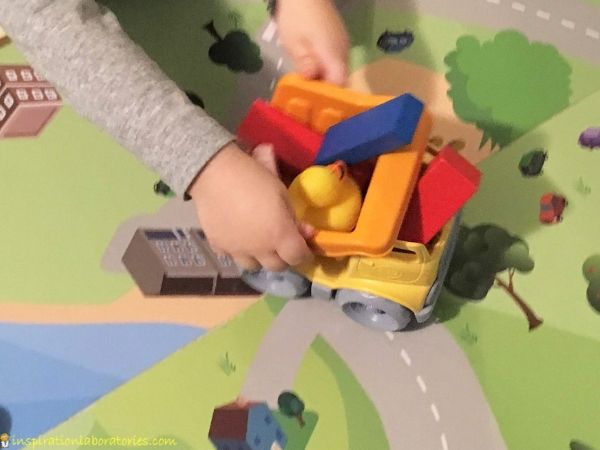7 Montessori-inspired ways to have a smoother morning with your kids
When our children spend so much of the day away from us at school, the moments we do have together are precious. But, they don't always feel precious in the whirlwind of getting ready and out the door each day. Sometimes it seems like no matter how much time we allot, it is never enough. After all, who can predict that last week's favorite train shirt would lead to a full-on toddler meltdown during your morning routine for school?

Here are a few things you can do to help your child have an easier morning routine when going back to school:
1. Talk it through
Choose a low-stress time, such as while riding in the car or eating a snack together, and talk through the morning routine with your child. Ask them what needs to happen in the morning before they go to school. Prompt with tasks they might forget, like brushing teeth or putting on shoes. Walk through all of the steps a few times so they have a good idea of what is coming.
While your child will inevitably still need reminders, this will give them a solid understanding of what needs to happen each day.
2. Make a picture chart
After you've talked through everything, make a picture chart for your child depicting the sequence of their morning routine. Take a picture representing each step—one of the potty, one of their toothbrush, one of their clothes laid out, etc. Or, have fun drawing the pictures together instead!
A picture chart provides even young children a resource, other than you, to consult when they're unsure of what to do next.
It can also be helpful if your child gets off track. Remind them to check their picture chart to see what comes next. This is more empowering than simply telling them exactly what to do, which is more likely to instigate a power struggle.
If your child is older, help them write a list, or draw their own pictures of what needs to happen in the morning and post it somewhere they will see it each morning, like by the bedside table.
3. Have your child pack their own lunch
Depending on your schedule, it is likely better to do this the night before, but encouraging your child to pack their own lunch helps them take ownership of their school day.
Worried their lunch will consist of nothing but crackers and grapes? Make a simple rule such as one protein, one grain, one fruit, and one vegetable. Help them think of options in each category.
If they're older, brainstorm what they would like in each category before you go to the grocery store. Anything you can do to help them feel like they have a say in the process will help the morning go more smoothly.
4. Offer limited clothing choices
Allowing children to choose their own clothes is wonderful, but it can be quite time-consuming in the morning. Lay out two options for your young child to choose from. Always put them in the same place, such as a small shelf in their closet, so they will know where to look in the morning.
For an older child, encourage them to lay out their own clothes the night before so they won't have to decide when they're still half asleep in the morning.
5. Allow a natural consequence
When the planning and picture charts don't work, try allowing a natural consequence to take place instead of nagging and repeating yourself. It may be a little unpleasant, but it will also be effective, and will likely only need to happen once.
Are they taking too long to get out of bed? There will be no time for eating pancakes together, they'll have to settle for a granola bar in the car.
Are they refusing to get dressed? They will have to bring his clothes with him and arrive at school in jammies.
These are not punishments, they are simply things that logically happen when the routine isn't followed.
6. Build in time for togetherness
One reason that children stall in the morning is that they want you to help them because they need that time together. Build in a few minutes of togetherness before asking your child to get themself ready each morning.
It may seem like you don't have 5-10 minutes to spare, but this will likely save you time as your child will have gotten the bonding time they need and be less likely to resist the rest of the morning.
For an older child, encourage them to lay out their own clothes the night before so they won't have to decide when they're still half asleep in the morning.
5. Allow a natural consequence
When the planning and picture charts don't work, try allowing a natural consequence to take place instead of nagging and repeating yourself. It may be a little unpleasant, but it will also be effective, and will likely only need to happen once.
Are they taking too long to get out of bed? There will be no time for eating pancakes together, they'll have to settle for a granola bar in the car.
Are they refusing to get dressed? They will have to bring his clothes with him and arrive at school in jammies.
These are not punishments, they are simply things that logically happen when the routine isn't followed.
6. Build in time for togetherness
One reason that children stall in the morning is that they want you to help them because they need that time together. Build in a few minutes of togetherness before asking your child to get themself ready each morning.
It may seem like you don't have 5-10 minutes to spare, but this will likely save you time as your child will have gotten the bonding time they need and be less likely to resist the rest of the morning.
source: mother.ly








